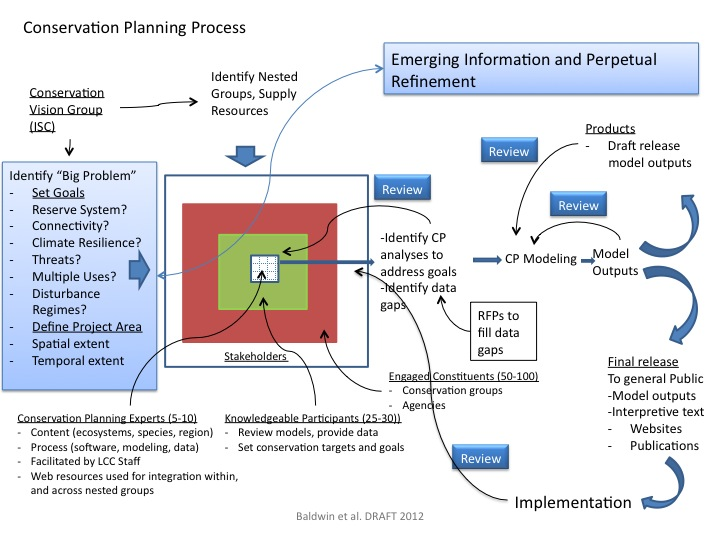Conservation Planning Process
Conservation planning identifies and prioritizes lands that encompass important natural or cultural resources across the landscape (e.g., critical watersheds, habitat for rare or threatened species) and develops protection and management strategies for these lands. It is a process where science is at the core of planning, but the science is informed by groups of stakeholders using their on-the-ground knowledge and expertise. Dr. Robert Baldwin of Clemson University explains in this video the steps involved in the conservation planning process.
Dr. Robert Baldwin has been working in biodiversity conservation, inside and out of academia, for about 20 years. He began his career as a research assistant at the National Zoological Park at the Smithsonian in Washington D.C. He began doing field studies and eventually taught for six years in a traveling, interdisciplinary field program that took him throughout the four deserts, the Pacific Northwest, and the Appalachian Spine. He was born in Washington D.C. and grew up on the coast of Maine. Rob attended Colby College, the University of Edinburgh (UK), George Mason University, and the University of Maine. Dr. Baldwin was a Robert and Patricia Switzer Foundation Environmental Fellow, and Leadership Grant recipient. He is also co-editor of the 2010 book "Landscape-scale Conservation Planning".























